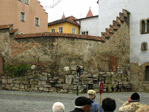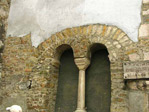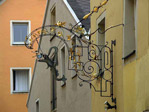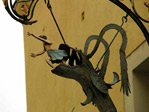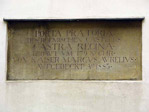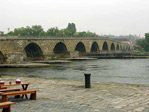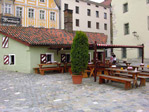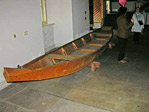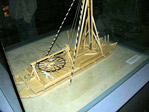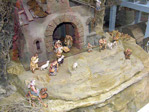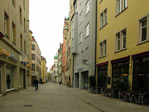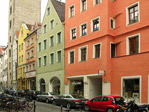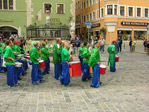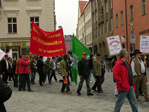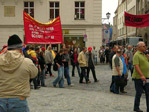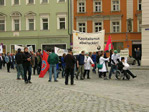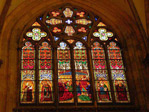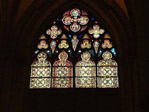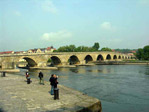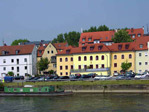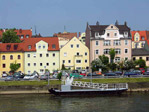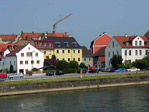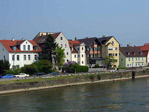Day 6 — May 1, 2009
Regensburg was a Roman garrison town, Castra Regina, guarding the natural frontier of the Danube at its northerly point. Some evidence of the Roman occupation remains to this day and can be seen in these first two photographs and the fifth one below.
In the 7th century, the town was converted to Christianity and in 739 A.D. the Church was formed under the direction of a bishop. It then developed as a center for religious life of the Middle Ages which is reflected by the numerous religious buildings within the city. It must be pointed out the in the 3rd and 4th photograph below is a representation of Johanna being swallowed by the whale.
Skirting around the center of the city which we would soon go into, we get a glimpse of the Gothic St. Peter's Church, the Old Town Hall and the multi-arched 12th century Old Stone Bridge (Germany's oldest bridge). There also appeared more evidence of Roman days cut into this stone plaque.
Near the Stone Bridge was a little museum. The purpose of this museum was to display some relics from the past and the history surrounding salt trading in the 13th century or earlier. Salt was a valuable commody in the days before refrigeration being it was a natural preservative for many foods.
In the following photographs we are winding our way over the cobbled street on our way to the St. Peter's Church.
The following building is a governmental building. Look closely at the corners of this building. It looks like stone but it painted to give the illusion of the third dimension.
On arrival at the Church there was a demostration of political nature starting in the street. Not capable of reading German, I could make out that this group did not like capitalism. They are probably not too friendly to the governing party of Germany.
The church! Leave the demostrator be. The church, the Regensburg Cathedral, is a very interesting example of pure German Gothic and counts as the main work of Gothic architecture in Bavaria. It was founded in 1275 and completed in 1634, with the exception of the towers, which were finished in 1869. Wonder if there were cost overruns?
From Gothic to Modern. The morning had been chilly and we were in need of coffee. Inside a hotel, we found a neat little, cozy room for relaxing before returning to the River and our boat.
We find our way back to the Danube and the Stone Bridge. The Stone Bridge was used for crossing the Danube and became a vital traffic artery as the river's only crossing between the great centers of Ulm and Vienna; indeed, for more than 800 years it served as the sole Danube-spanning bridge in Regensburg, the town located at the river's northernmost point and thus a central junction between northern France and much of the rest of Europe. The Stone Bridge was used throughout the Middle Ages by emperors and kings traversing these routes, and was crossed by the crusader army of Louis VII.
Another view of the St. Peter's Church of Regensburg.

